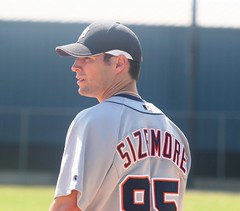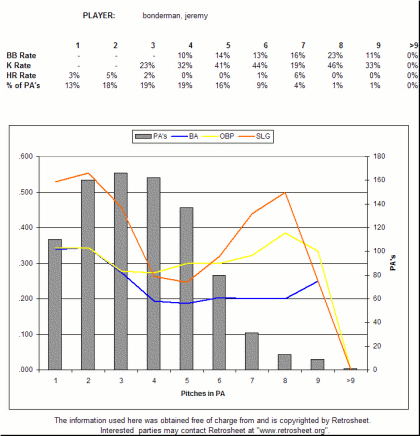Some good, some bad, some stats for the month of April:
- Gary Sheffield managed 19 walks which is pretty incredible for a guy who is hitting .200 in front of a guy hitting 344/434/622. That total matches Bobby Higginson’s 19 walk effort in 1999 as the most walks by a Tiger in April
- Marcus Thames managed to slug 515 while batting 182. He hit only one single for the month – and 3 homers
- Another interesting Thames note, he had 35 plate appearances, and with his 15 K’s, 2 walks, and 3 homers, the defense only needed to do something in 15 of those plate appearances
- I’m not complaining about Curtis Granderson’s production at all, he’s slugging 525 after all. But…Granderson has only 6 walks against 28 k’s. The exact same ratio as Craig Monroe.
- Pudge Rodriguez who was exercising some plate discipline during the spring hasn’t seen that translate. Rodriguez only has 1 walk on the season.
- Jeremy Bonderman is sporting the ultra-impressive 33:5 strikeout to walk ratio. The second best ratio behind Bonderman belongs to the much maligned Fernando Rodney who is at 13:4.
- Chad Durbin was next at 18:6. Of course these were April only stats.
- The Tigers turned 24 bases loaded at-bats into 32 runs. Four grand slams and a couple doubles will help with that.
Today I heard several local sports talk hosts talk about the Tigers struggles and disappointing month. I’m just not seeing it. Granted, they weren’t clicking on all cylinders, but they’re hanging with the rest of the division. Heaven forbid the Detroit has a month in which they can only manage a 12-12 record. It wasn’t a great month team wise, but I’d still have to rate it as pretty good.
Cold as Ice: April is in the books » Mack Avenue Tigers has more April musings for your enjoyment.

